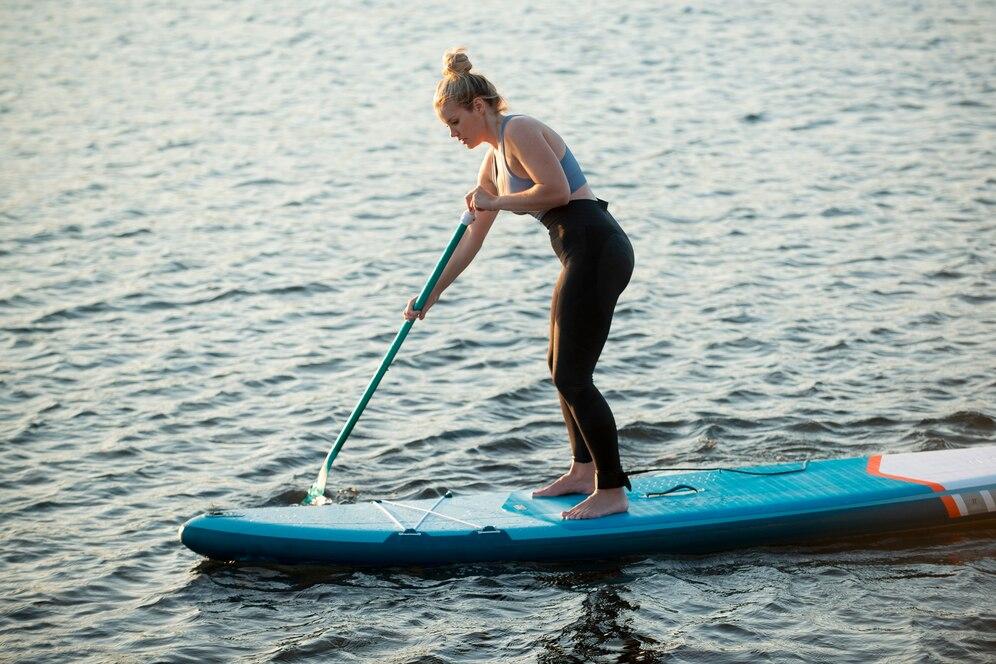Stand-Up Paddleboard Market Barriers to Growth and Expansion

The stand-up paddleboard (SUP) market has seen significant growth in recent years, fueled by increasing interest in outdoor sports, fitness, and adventure tourism. However, like any industry, the SUP market faces certain challenges and restraints that may affect its growth trajectory. These obstacles are primarily driven by factors such as high product costs, environmental concerns, and competition from other recreational activities. In this article, we will examine the key restraints that could impact the future of the stand-up paddleboard market.
High Product Costs
One of the primary restraints affecting the stand-up paddleboard market is the relatively high cost of purchasing a paddleboard. High-quality boards, especially those made from advanced materials such as carbon fiber or military-grade PVC, come with a hefty price tag. While inflatable paddleboards (iSUPs) offer a more affordable and portable option, they still remain an investment for most consumers.
The cost of accessories such as paddles, life vests, and pumps can add to the overall expense, making it a barrier for price-sensitive customers. Additionally, consumers in developing markets with lower disposable incomes may find the price of SUP boards too high to justify the purchase, limiting market expansion in these regions.
Environmental Impact
While there is an increasing demand for eco-friendly products, the environmental impact of paddleboard production remains a significant concern. Many stand-up paddleboards, particularly traditional rigid models, are made from non-biodegradable materials like fiberglass and PVC, which can take years to break down. The production of these materials also contributes to environmental pollution and energy consumption.
As consumer awareness of environmental sustainability continues to rise, there is increasing pressure on brands to adopt greener production methods and materials. However, transitioning to more sustainable materials and manufacturing practices could increase costs, which may further deter potential buyers in price-sensitive markets.
Moreover, the transport and disposal of paddleboards, especially large rigid models, also contribute to their carbon footprint. The difficulty in recycling these products at the end of their life cycle poses additional environmental challenges for the industry.
Competition from Other Water Sports
While stand-up paddleboarding is gaining popularity, it is still in competition with other water sports such as kayaking, surfing, and jet skiing. These sports have more established fan bases, and consumers may prefer them due to their long history and reputation. For example, surfing has a strong cultural presence in coastal regions, which makes it more appealing to certain demographics, particularly in countries like the United States, Australia, and Spain.
Additionally, some water sports, like kayaking, may offer more practicality for people looking for specific features, such as more storage or the ability to navigate rapids. The competition from these other activities could potentially limit the growth of the SUP market in certain regions, especially in areas where those sports are already deeply ingrained in the culture.
Space and Storage Issues
While inflatable paddleboards (iSUPs) have become increasingly popular due to their portability, traditional rigid paddleboards still face storage and transportation limitations. Storing a full-sized board requires ample space, which can be an issue for people living in apartments, small homes, or urban areas with limited storage space.
Even for inflatable boards, the need for sufficient storage space and the hassle of inflating and deflating the board before and after each use can deter some potential buyers. These practical concerns can limit the appeal of SUP to those who have the space to accommodate a paddleboard or those who have easy access to places where they can use the board.
Weather Dependence
Stand-up paddleboarding is highly dependent on favorable weather conditions, particularly calm and clear waters. For those living in regions with unpredictable or harsh weather conditions, such as extreme cold, heavy rainfall, or strong winds, paddleboarding may not be a viable option year-round.
This seasonality and dependence on weather patterns can limit the growth of the market, particularly in regions where the weather is less conducive to water sports. Although SUP can be done on lakes, rivers, and other bodies of water, these areas may be inaccessible or inhospitable for parts of the year, making them less desirable for people who want year-round recreation.
Regulations and Safety Concerns
In some regions, increasing regulations surrounding water safety, liability insurance, and safety gear may impact the accessibility of stand-up paddleboarding. Local governments and authorities may introduce stricter rules requiring SUP enthusiasts to wear life jackets or use specific safety equipment, which could increase the overall cost of the activity.
Moreover, SUP can carry risks of injury, particularly for beginners or individuals who are not in optimal physical condition. The risk of falls or collisions with obstacles may discourage some potential customers from pursuing the sport, particularly those who are risk-averse or unfamiliar with water sports.
Conclusion
While the stand-up paddleboard market has a positive growth outlook, it faces several restraints that could affect its expansion in the coming years. High product costs, environmental impact, competition from other water sports, and logistical challenges like storage and weather dependence are some of the major factors holding back the broader adoption of SUP. However, the industry is responding to these challenges through innovations in materials, production methods, and product designs. The success of these efforts will ultimately determine whether the market can overcome these restraints and continue to thrive in the future.
- Art
- Causes
- Crafts
- Dance
- Drinks
- Film
- Fitness
- Food
- Games
- Gardening
- Health
- Home
- Literature
- Music
- Networking
- Other
- Party
- Religion
- Shopping
- Sports
- Theater
- Wellness


